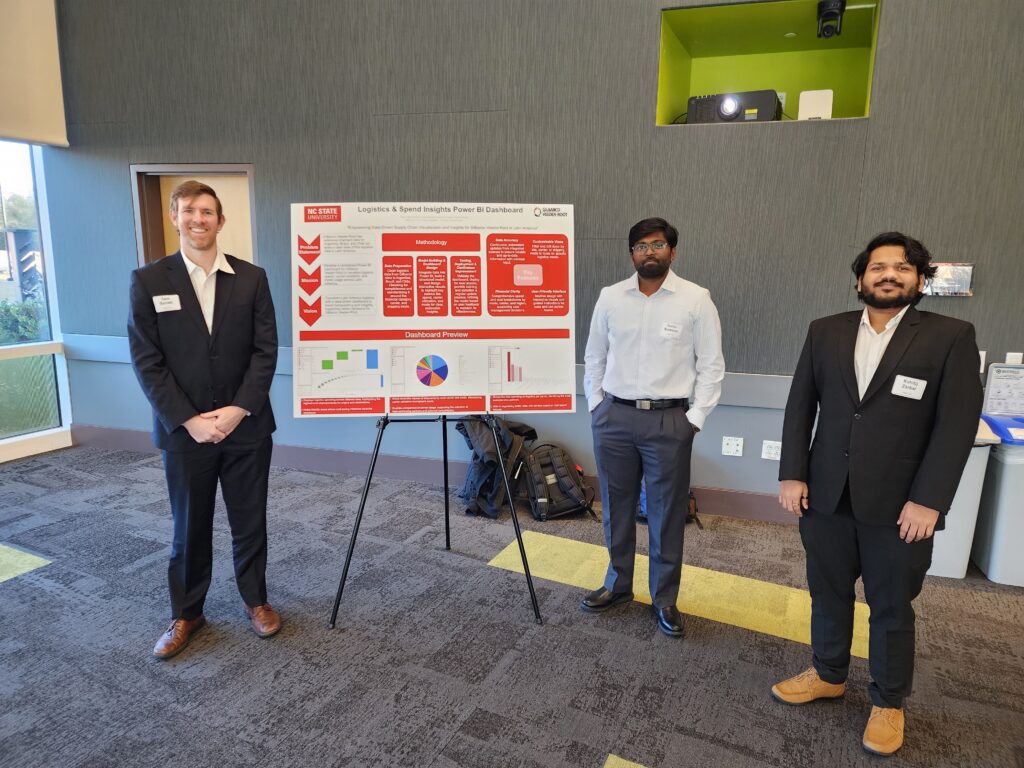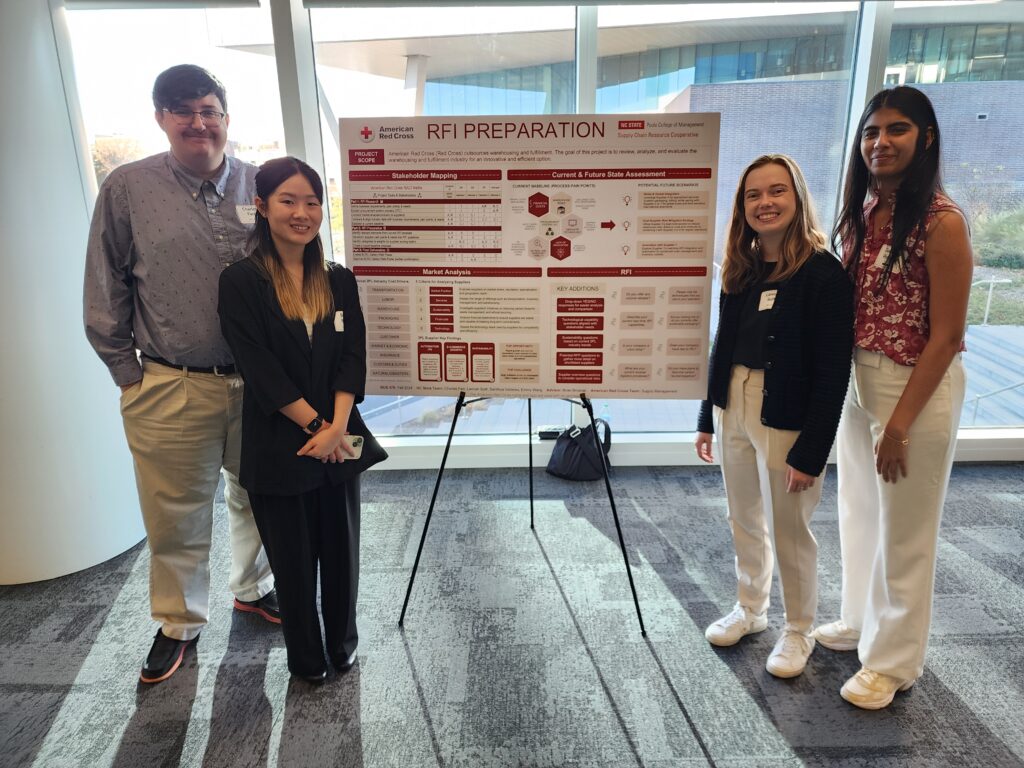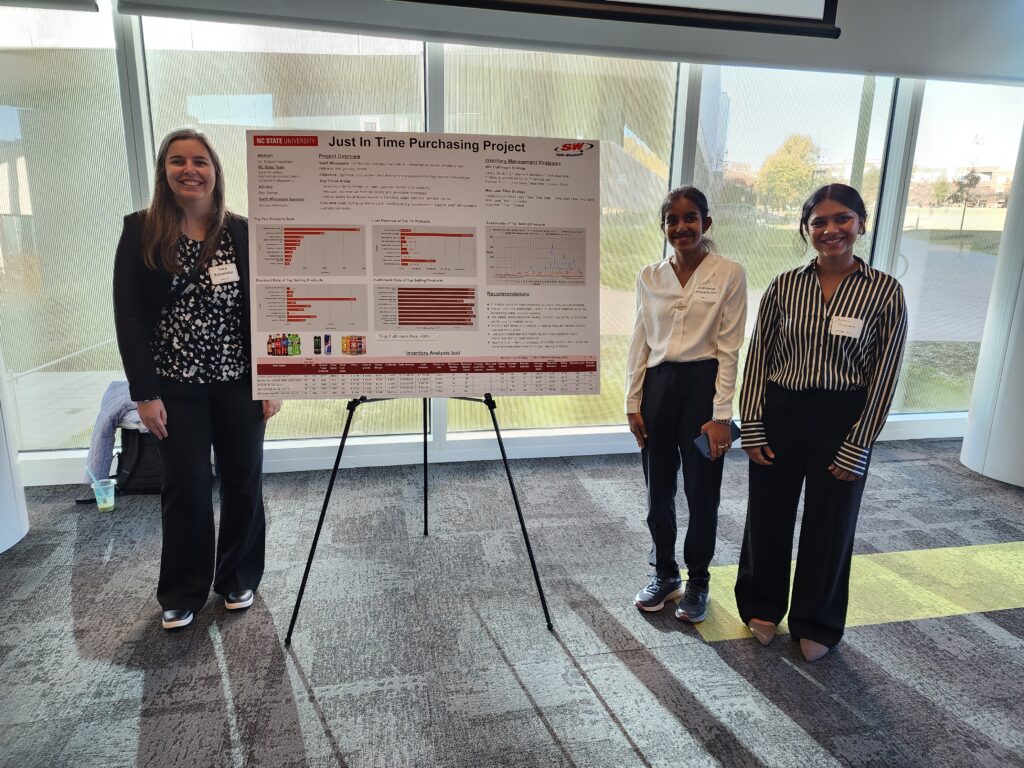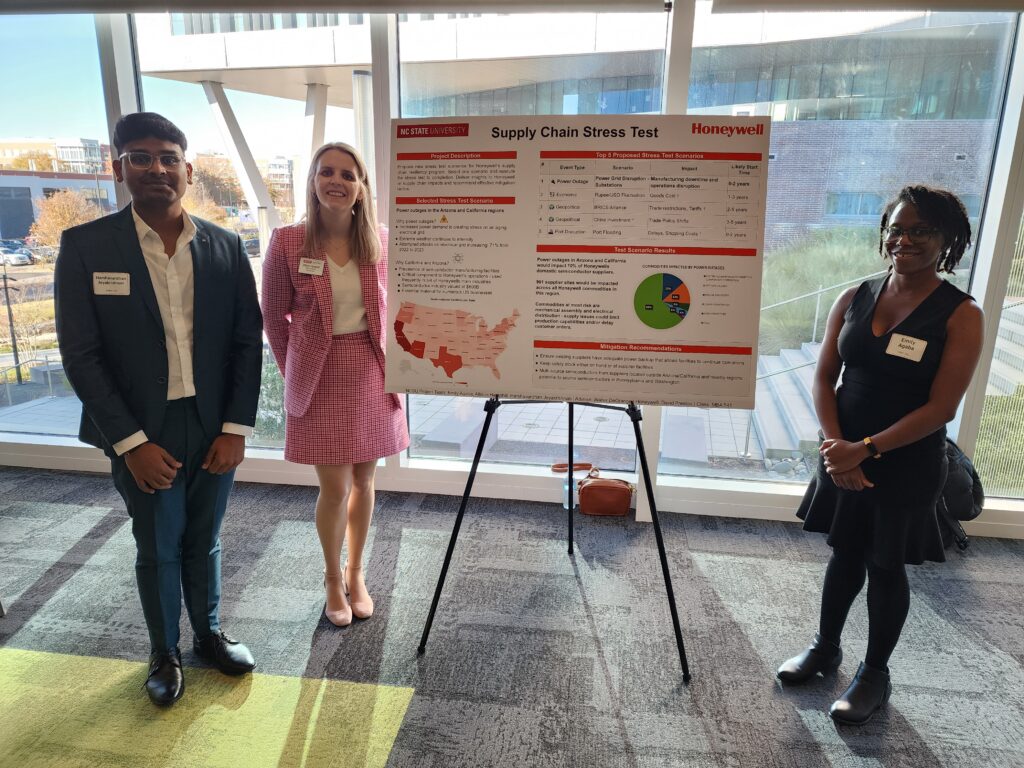Student Teams Deliver Supply Chain Solutions
Gilbarco Veeder-Root, a global supplier of fueling equipment and services, needed a data visualization tool to better understand its shipping logistics in Latin America. The company isn’t alone in looking to apply new technologies to thorny supply-chain challenges. At a time when the smooth flow of goods and materials is straining under the weight of trade disputes, natural disasters, labor shortages, demand spikes, cyberattacks and regulatory changes, companies like Gilbarco must prepare for the unexpected.
To tackle its data visualization challenge, Gilbarco turned to a team of students participating in a semester-long practicum offered through the Poole College of Management’s Supply Chain Resource Cooperative. The SCRC is a unique, industry-university partnership dedicated to advancing the supply chain industry and the professionalism of its practitioners.

“We had to work through a lot of different ideas to find a way to harmonize the data,” said Sam Bendel, one of four MBA students on the team. After cleaning the data, the students used Microsoft’s data analytics tool, Power BI, to create and test an interactive dashboard displaying shipping routes, shipping volumes by carrier and mode, and total expenditures per carrier.
Bendel’s team was one of 10 teams of graduate and undergraduate students that took part in the SCRC program last fall, gaining real-world experience solving problems for companies and organizations such as Honeywell, the American Red Cross and MetLife. In December, the teams unveiled their solutions at a “Gallery Walk” event at the Hunt Library on Centennial Campus — an event attended by faculty, project advisors and industry partners.
Sadia Lorentz, senior director of supply management for the American Red Cross, worked with a team of MBA students on a project to improve how the Red Cross manages its contingent workforce, which includes temporary workers and independent contractors.
She praised the students for their insights.
“They brought a fresh perspective,” she said. “They have so many tools at their disposal and they’re very intelligent in how to use those tools. I was impressed by their ability to take our data and apply different resources and a different thought process to it.”
While the students brought fresh ideas and technologies to the partnership, executives at the Red Cross helped the student develop some of the soft skills that take years to master.
“I find that students often rely on technology at the expense of their critical thinking skills, which need maturing,” Lorentz said. “But that’s why we’re here.”

In addition to company representatives such as Lorentz, the student teams were paired with industry insiders who served as executive advisors, guiding them through the complex process of organizing their work and crafting solutions on a tight deadline.
Craig Weeks, an executive with the Bankers Association for Finance and Trade, advised the Red Cross team. He had the students perform a mid-semester assessment to ensure everyone was “pulling the oars” in unison. He applauded the students’ attention to detail.
“What immediately became apparent was their natural inquisitiveness,” he said. “They’ll dig and dig and dig until they get to a place where they feel that they know enough to solve the problem.”
Sometimes the data itself is a problem, the students found. For example, some teams were confronted with a nearly unmanageable amount of data to process.
“We received a million rolls of data from the company,” said Sharen Zhang, a senior in business administration who worked on one of three projects for Gilbarco Veeder-Root during the fall 2024 semester. “It was difficult because some of the data was missing and there were some unknown variables we needed to identify. We had to clean up a lot of it.”
MBA student Sara Knowlson worked with two other graduate students on an inventory management project for Swift Wholesale. Her team struggled to get the company’s data into a useable form.
“Initially, we got the data as PDF files with the individual sales for every single day,” she said. “We had to convert everything into an Excel spreadsheet before we could start with our analysis. Thankfully, we had a great advisor and awesome teammates. It turned out to be a very interesting process.”

For other teams, limiting the project to a reasonable size was an issue. Mrugank Joshi, a student in the Master of Engineering Management program, worked on a team advising Eaton Corporation on ways to align its sales, inventory and operations planning.
“Eaton has multiple MRP (material requirement management) systems in different plants and they needed a tool to pull the data together into a central database for sector-level people and for portfolio decisions,” Joshi said. “Our biggest challenge was focusing the project so that it was manageable; to basically finalize the scope of it.”
The project’s advisor, Tim Fairchild, was an executive at SAS for over 20 years. He said communication played a key role in keeping the students on track.
“We had a great cadence of weekly meetings with the sponsor and then internal meetings among the students to manage a pretty aggressive plan,” he said. “It was a huge, very complex project involving multiple divisions of this large company that’s growing like crazy.”
Some teams faced challenges related to the sponsoring company’s external environment. Emily Agaba was one of three graduate students working with Honeywell, a leader in aerospace, automation and energy, to improve its supply chain resilience by identifying and testing potential stress scenarios. There were a lot, the students discovered.
“You’re trying to predict the future, but it’s very uncertain,” Agaba explained. “There were so many supply chain risks, that narrowing it down to the 20 we identified as the most critical for Honeywell was very challenging.”
Among the test scenarios that made the list were power grid disruptions, currency fluctuations, trade restrictions, trade policy shifts and port flooding. A scan of the news since the project was completed last fall seems to validate the students’ recommendations.

The SCRC practicum proved a win-win for both the students and the sponsoring industry partners. Steven Spinelli, an MBA student on the American Red Cross project, said his team never lost sight of the fact that they were working on a real-world challenge, not just completing an exercise from a textbook.
“We felt we had a responsibility to really do it right,” he said. “We were providing a real consulting service to a company in need of a specific request. We tried to provide the best data analytics that we could and to give them some solid recommendations.”
The SCRC has provided opportunities for more than 3,000 students and 280 industry partners to collaborate over the past 25 years, resulting in the completion of more than 900 projects. To learn more, visit the Supply Chain Resource Cooperative.